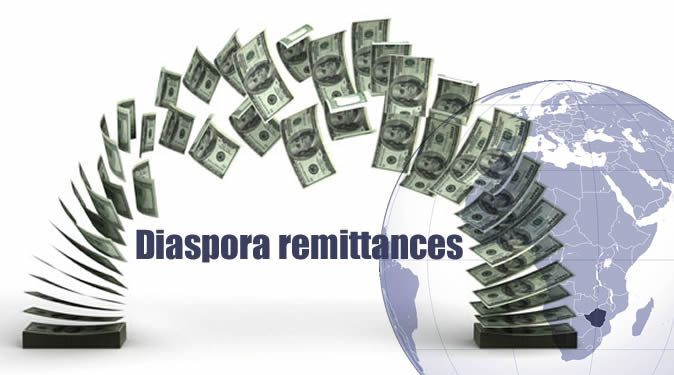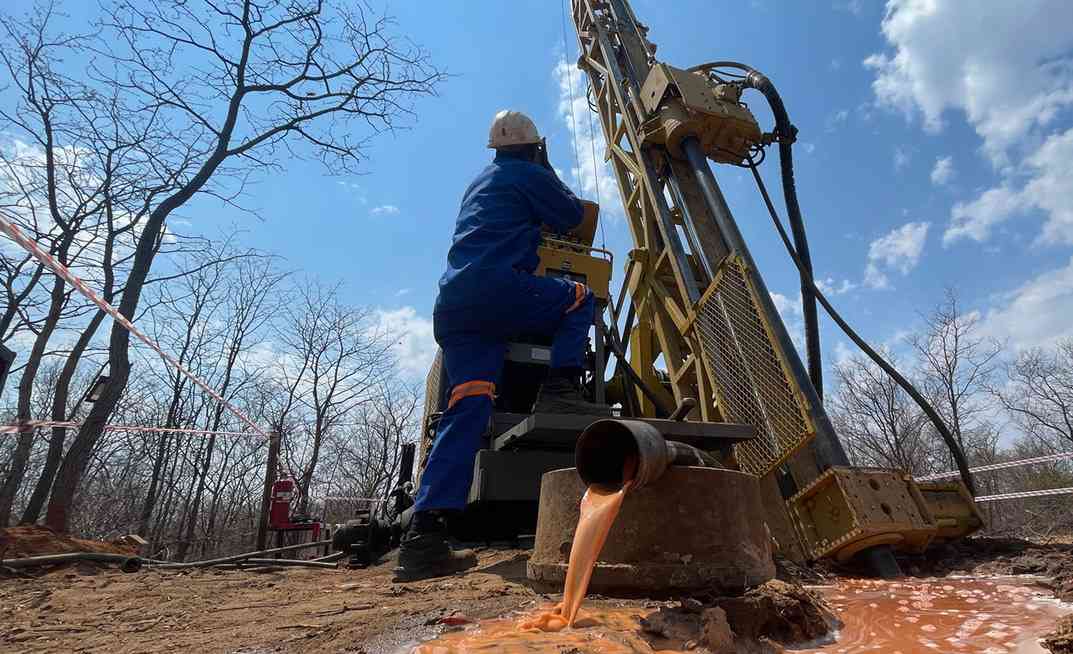
The flow of remittances to Zimbabwe is huge, with diaspora remittances from outside the country estimated at over US$1 billion per annum, or around 16% of total foreign exchange receipts.
This comes from a large network in the diaspora, whether in the region (mostly South Africa) or further afield, including the UK.
Remittances also flow internally within the country, from people working in town in government jobs or in businesses of different sorts.
Flows of finance also come from off-farm work, including artisanal mining, which is very significant especially for younger men in some parts of the country.
However, remittance flows are subject to wider economic and political conditions, both internationally and within Zimbabwe.
Despite many expecting a dip in international remittances during the Covid-19 pandemic as relatives were retrenched and economic conditions worsened in many parts of the world, they actually increased, crossing the US$1billion mark, as relatives abroad “rose to the occasion”.
International remittances however are always uncertain. Xenophobic attacks on Zimbabweans in South Africa make many fear to go and others return.
Meanwhile, new, restrictive immigration requirements in the UK, preventing families from being together, will put many off joining the flow of labour to support the UK’s health and care system.
- Mavhunga puts DeMbare into Chibuku quarterfinals
- Bulls to charge into Zimbabwe gold stocks
- Ndiraya concerned as goals dry up
- Letters: How solar power is transforming African farms
Keep Reading
Within Zimbabwe, with the on-going economic crisis now persisting over 25 years, the option for paid work outside farming has contracted, and the possibilities of sending money to rural home areas has declined.
Indeed, remittance flows have reversed in many instances, with farmers in the land reform areas supplying food to those in town or relatives in the communal areas, as discussed further below.
Remittances have long been part of the financing of agriculture in Zimbabwe.
In the relatively stable economic conditions of 1980s, for example, around 65% of farm income was derived from remittances from all sources in the communal areas, with significant impacts on poverty reduction.
The old pattern of migration to off-farm work in towns, on farms and in the mines established in the colonial era persisted.
The ‘reserves’ (now communal areas) were areas where labour resided and could be contracted for periods in what was the core economy, controlled by the white racial minority.
Following independence in 1980, this pattern persisted, but has changed dramatically since the late 1990s, when the old core economy declined due the effects of first structural adjustment and after 2000 due to land reform.
These changes resulted in the emergence of a new, largely informal economy centred on small-scale farms and micro-enterprises of different sorts, with the post-2000 resettlement areas at the core of a new rural economy.
Women became more involved, as traders and small-scale entrepreneurs, as the reconfigured land use provided new opportunities, especially around the growth of local value chains and the small towns in former large-scale farming areas, as we’ve documented extensively on this blog.
While the official statistics focused on what was the former formal economy showed collapse, any quick observation of what is going on shows that these depressing numbers ignore much vibrant economic activity across rural areas.
Although the demographic cycle of largely male migration to formal jobs resulting in remittances flowing to rural areas for investment – in the past mostly cattle – has changed, the remittance economy is still important as the headline statistics show.
How does this work? What mechanisms are used for transfers? What investments result? These are the questions tackled in this blog.
Remittances may be for small, regular requirements — groceries, school fees and so on — for emergencies — such as dealing with a pest or animal disease outbreak, paying for medical expenses or coping with drought.
But crucially, in the absence of other forms of financing (see previous blog), remittances are also essential for lumpier investments.
Today such investments are crucial for encouraging growth in the agricultural economy, and for moving agricultural production towards a more commercial orientation.
As we have observed across our sites, investment in irrigation is vital, as people intensify on smaller plots.
Jojo water storage tanks, irrigation pumps, piping and so on are in high demand and can be seen in many farms across the country.
Investments in machinery, including grinding mills, peanut butter processing equipment, transport, two-tonne trucks, pick-ups and so on is also crucial in the new agricultural economy, as a previous blog series has shown.
All of these benefit both from the sales of agricultural surpluses and from remittances, in varying combinations depending on crop harvests and the connections of the household to remitting family members.
Remittance flows therefore follow a demographic cycle, with children growing up leaving the farm home and getting jobs at home and abroad.
Not all are able or willing to remit but many do, keeping the link across generations between farms and a wider, increasingly global, network.
We have been exploring the patterns of accumulation across our sites, and a clear pattern emerges with investment in education being financed often through agriculture, resulting in few surpluses for investment except in exceptional years, but educated kids will often be able to send money home later once they gain employment in later years, meaning parents can then invest in intensification, often to compensate for lack of family labour and to make farming more manageable in old age.
A particular pattern of contemporary remittances from those who have jobs elsewhere, especially abroad, is investment in ‘projects’.
Across our sites we see a whole range of investments, including piggeries, fish farms, goat projects (especially improved breeds), beef cattle feeding/fattening, transport/marketing projects, broiler operations and irrigation plots for intensive horticulture, requiring boreholes, water storage, pumps and pipes.
These projects are established on parents’ land reform farms where surplus land and water can be put to good use.
Diaspora sons and daughters may employ labourers to take care of the projects, but their parents must provide overall management.
Profits are used to support the family home, as well as school fees for younger siblings, medical and funeral expenses.
Many diaspora children build houses and invest in all the mod-cons of town living, with solar electricity systems, flush toilets and the rest.
Large TVs, nice sofas, sound systems and so on can be found in many people’s living rooms these days in houses with metal roofs, multiple rooms and fancy windows and doors.
As one of our informants commented, “the farms these days are like town.
Solar, TVs, fridges. We invest in all this to lure our children home. We want them to come back and be involved in the farm.” At another farm in Masvingo district we were admiring the tall stands of irrigated maize and the considerable irrigation infrastructure around the homestead, including a new borehole, a water storage tank and drip irrigation in the field.
Mrs M, a widow, explained that this was investment from her eldest son who after leaving college got jobs that allowed him to develop the farm.
This is providing income for the whole family, including paying for school fees for the younger children.
It is an impressive investment and, as Mrs M explains, she gets lots of visitors marvelling at the achievements.
She is making significant profits now from the farm, but the start-up investment could not have happened without the remittances.
She also points out that her son is keen on farming, and as he works locally comes often and is keen on taking over.
The remittance economy linked to land reform areas is vibrant and driving investment in rural areas, as well as supporting vulnerable households in towns and other rural areas across the country.
Remittances do not flow in a single direction, are subject to changes in politics and economy both at home and abroad and involve an increasing number of transfer approaches that increase efficiency and enable quick responses.
The changing dynamics of remittance flows remain under-studied yet are vitally important, as this blog has hopefully shown.
Our future research will hopefully delve into this theme in more depth, adding some quantitative specification to some of the qualitative cases shared here.
How people make use of money — both from local farm production and from externally-derived sources — through approaches to saving in a highly volatile economy is the focus of the next blog in this series.
*This blog first appeared on Zimbabweland.









